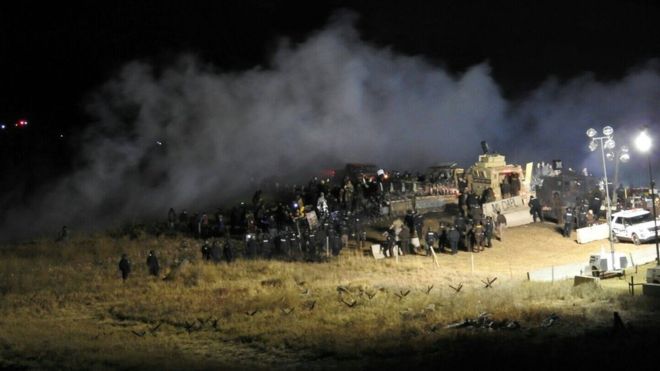
Police used tear gas, rubber bullets, mace, and water cannon against demonstrators protesting the North Dakota Access pipeline.
Activists at the scene say that police had used water jets in sub-freezing temperatures and fired rubber bullets reportedly targeting demonstrators’ heads and legs.

BYPASS THE CENSORS
Sign up to get unfiltered news delivered straight to your inbox.
You can unsubscribe any time. By subscribing you agree to our Terms of Use
Latest Video

More than 167 demonstrators have been injured, according to a medic on site, as cited by Indigenous Rising Media.
Seven people have been hospitalized for severe head injuries and hypothermia. Three of those injured were reportedly elders of the Standing Rock Sioux tribe.
Pepper sprayed, tear gassed, hosed down, shot with rubber bullets… solidarity with the #NoDAPL water protectors. #StandingRock pic.twitter.com/l7mW7WVt15
— Tim Bednar (@TheMightyBednar) November 21, 2016
Drone narrowly escapes water cannon jet during #DAPL protest (VIDEO) https://t.co/nXObBElsWv pic.twitter.com/qL69gwgHgi
— RT (@RT_com) November 21, 2016
Press TV reports:
The face-off took place on Sunday evening, when about 400 protesters gathered near one of the project’s construction sites, trying to get past a bridge that had been blockaded since late October, according to the Morton County Sheriff’s Office.
Calling the protest “an ongoing riot,” police officials said they used water cannons to disperse the group despite the low temperatures at the area.
Eyewitness videos showed police officers using tear gas as well. At least one protester was taken into custody, according to unofficial reports.
The protests were part of a nationwide movement by Native American tribes and scores of environmental activists, some of whom have been camping outside the pipeline’s construction sites since August.
Led by the Standing Rock Sioux, more than 100 Native American tribes have warned that the four-state pipeline would destroy their sacred sites and contaminate their drinking water.
The government has twice asked the pipeline operator to voluntarily pause construction near the disputed area while the authorities reconsider the project’s route.
Video by Ruptly


